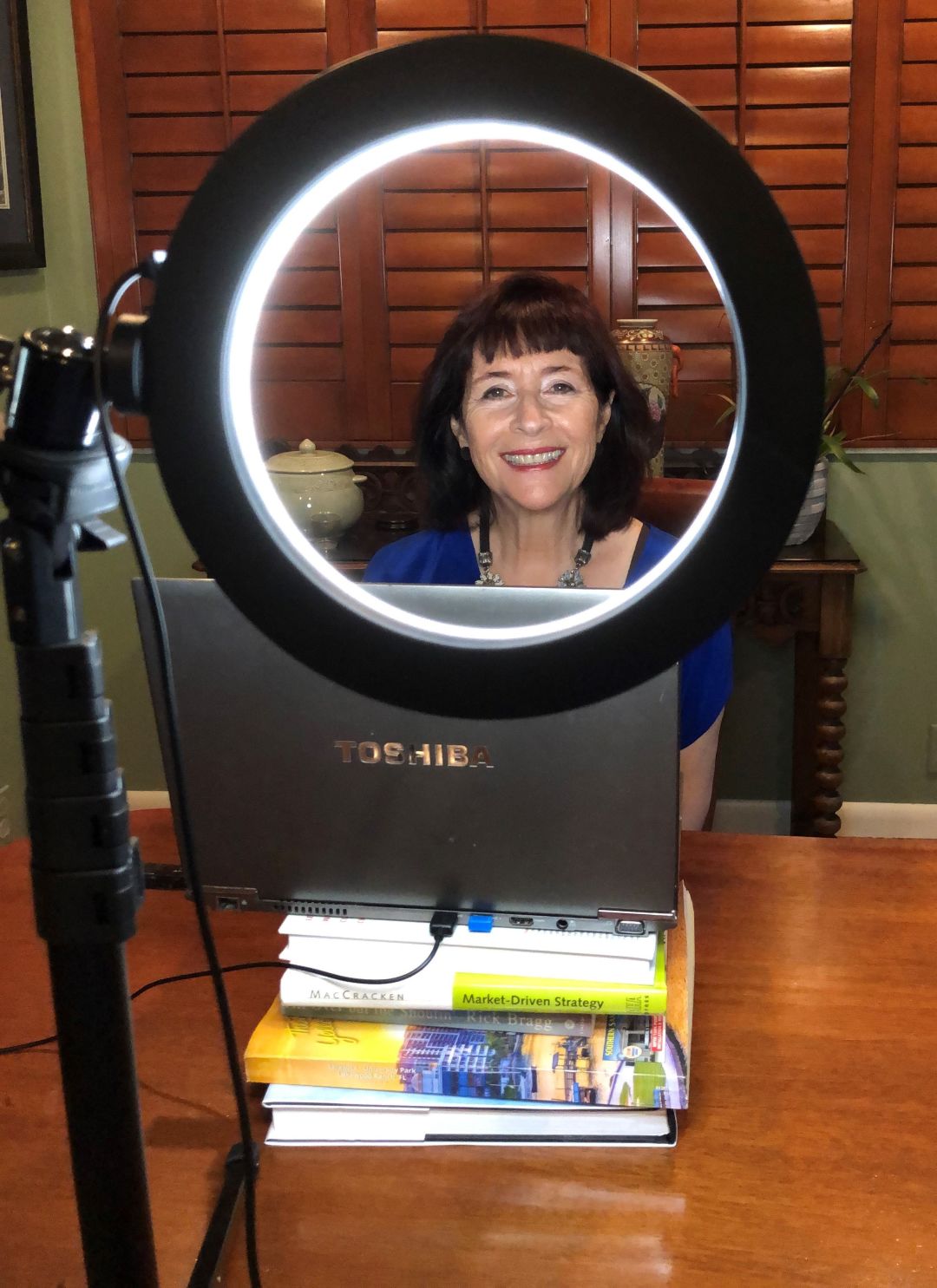How to Look and Sound Good on a Virtual Presentation

Want to look and sound good in your next digital presentation? Follow these tips.
Image: Kinga/Shutterstock.com
Communicating online has become second nature for most of us during the pandemic—but moving from in-person to digital isn't always the easiest transition. And if you are giving a virtual presentation for work, chances are you want to look and sound your best to effectively communicate your message.
Here are some tips on how to set your virtual stage and improve visual and verbal communication, from communication expert Joan Lowery from Lowery Communications. Lowery worked for several years as a broadcast and print journalist for news organizations like CNN, the Associated Press and the Discovery Channel. Now she hosts media trainings, teaching people how to present themselves on camera.
Here are Lowery's top five tips for looking and sounding your best on a virtual platform:
Use quality lighting
"Lighting is 'ground zero' for setting the stage," says Lowery. Face a natural light source and avoid back or overhead lighting, as it creates dark shadows on your face. Purchase a ring light to eliminate shadows, and glare-free glasses so participants can see your eyes.

Joan Lowery demonstrating ring light use.
Image: Courtesy Photo
Have an organized background and proper camera placement.
"Your background is an important statement about who you are," says Lowery. (Just take a look at the popularity of the Twitter account Room Rater to see what she means.) "Keep it simple, removing clutter and distracting objects."
Lowery also suggests placing your camera at eye level, and purchasing a separate camera to attach to your computer, if your computer's camera quality is poor. Look directly into the lens to mimic in-person eye contact. Keep the ceiling out of the shot, with just a little space above your head.
Test your sound quality prior to the meeting
Lowery suggests testing your computer's microphone quality prior to the meeting, and if background noise is detected, use a dedicated microphone. Wear ear buds with built-in microphones if you have unavoidable background noise, as it reduces extra sounds.
Minimize external distractions
Prepare for the presentation by eliminating distractions from others in your space. This can be difficult when working from home, especially if your kids are doing remote learning and your spouse is also working from home, but it's possible.
"Distractions can sometimes be amusing, especially in a casual setting, but it might interfere with your focus and distract from the message you wish to convey," says Lowery. "If distractions can't be avoided, let your audience know at the beginning of the presentation."
Hone in on verbal and nonverbal skills.
"Virtual, on-camera presentations draw attention to your every move, just like television," says Lowery. "Practice your presentation, record yourself and play it back. Critique your motions and expressions."
Sit with straight and forward-leaning posture, be aware of facial expressions and use hand gestures within the frame, so audiences can see them. Move more slowly than you would in person, so the recording does not lag your motions. Use an engaging tone of voice, avoid filler words and use pauses and silence strategically.
"The key to success in online communication is preparation-from setting the stage to preparing your message visually, vocally and verbally," says Lowery. "Don't use your meeting as the dress rehearsal. Practice beforehand and improve your skills."
To learn more from Joan Lowery, sign up for her Virtually Speaking class, or visit her website.



